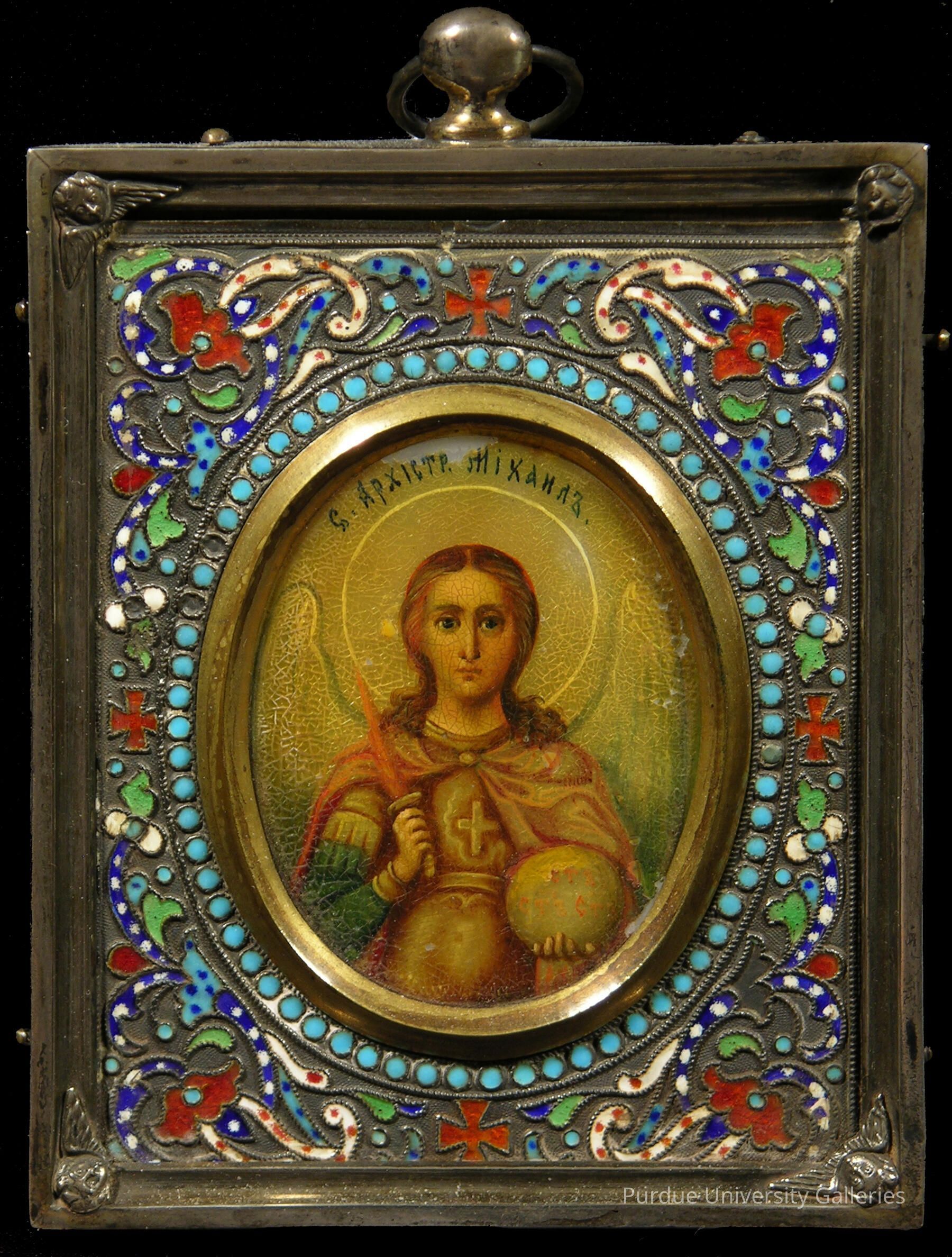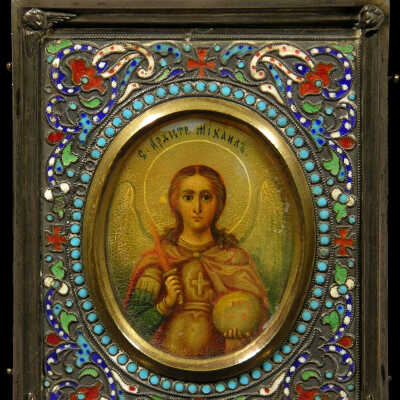Archangel Michal, The
Name/Title
Archangel Michal, TheEntry/Object ID
2005.02.005Description
This icon shows a painted miniature of the Archangel Michael on mother-of-pearl, in silver and enamel frame. A Cyrillic caption painted along the top indicates the subject of this painting. The archangel is shown with thinly traced blue/green wings, red-brown shoulder length hair, and is clothed in a gold breastplate, green tunic, and red-gold cape. He holds a gold sphere in one hand with Cyrillic text and a fiery sword in the other. The metal frame has images of winged angel faces in each corner, although some of the wings have broken off. There are hallmark stamps under the bottom edge of the frame. The image is backed in velvet, and there is Cyrillic text carved into the back.Type of Painting
PanelArtwork Details
Medium
WoodCollection
Betsy Scheuring Icon CollectionAcquisition
Accession
2005.02Source or Donor
Betsy ScheuringAcquisition Method
GiftCredit Line
Gift of Betsy ScheuringMade/Created
Artist
Alexey KolotishinDate made
1842 - 1876Place
Region
Yaroslavl RegionCountry
RussiaInscription/Signature/Marks
Type
Makers MarkLocation
Under bottom edge of frameTranscription
Eroded symbol (possibly the woman's head with diadem), 84, AKLanguage
CyrillicTranslation
AK; Alexey KolotishinType
InscriptionLocation
Back of iconTranscription
Cursive scriptLanguage
CyrillicLexicon
Nomenclature 4.0
Nomenclature Secondary Object Term
IconNomenclature Primary Object Term
Symbol, ReligiousNomenclature Sub-Class
Religious ObjectsNomenclature Class
Ceremonial ObjectsNomenclature Category
Category 08: Communication ObjectsDimensions
Height
3-1/2 inWidth
2-3/4 inExhibitions
Spirit Made Tangible: The Scheuring Icon Collection (2006)
Surveying the Sacred: Analysis of the Scheuring Collection of Eastern Orthodox Icons (2025)

